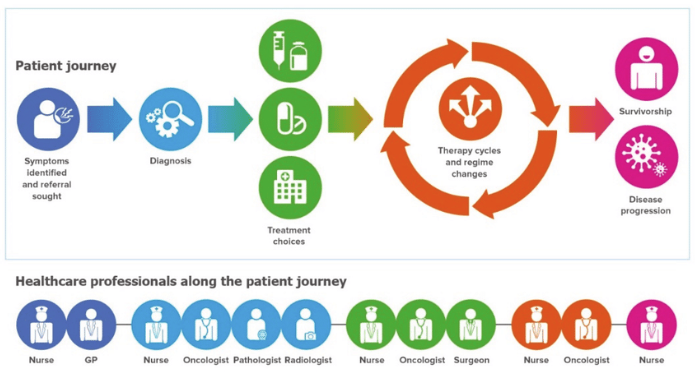Diagnostic and Treatment
Investigations
Most individuals will have at least one medical test below are some of the diagnostic tests you may require.
Blood Tests
Some of our bloods tests can take a few days and in some cases weeks to come back with the results, you will be advised if this is the case.
X-rays, CT Scans, PET-CT and MRI's
Three common types of imaging devices are x-rays, computed tomography (CT) scans and magnetic resonance imaging (MRIs) tests.
X-rays
X-rays are the most used diagnostic imaging test and are widely available. They are a form of radiation, and when passing through your body, bone and other dense objects block the radiation and look white on the film of the x-ray. The less dense tissues are hard to see and appear gray. The doctor will position the part of your body for scanning between the digital x-ray sensor or photographic film and x-ray machine. While the machine sends the radiation briefly through your body, you need to stay still.
CT Scan/PET-CT
Generates high-quality, detailed images of the body. It’s a more powerful and sophisticated x-ray that takes a 360-degree image of the spine, vertebrae and internal organs. You may have a contrast dye injected into your blood so the doctor can see your body structures more clearly on the CT scan.
The PET CT scan helps the physician to see the level of activity of certain body organs and tissues, along with their structure. You’ll receive a substance called a “tracer” containing glucose with a little bit of radioactive material. The radiation dose in the tracer is safe and minimal for most individuals. The tracer will be swallowed, inhaled or injected, depending on the examined body part.
MRI
MRI stands for magnetic resonance imaging and combines a strong magnet with radio waves. A computer operates the magnetic components, creating incredibly detailed images of body structures. The doctor views the images as “slices” or cross-sections of the scanned body part. Unlike x-rays, there’s no radiation involved.
Biopsy
A biopsy is the removal of a small sample of tissue – usually from a lymph node, but sometimes from an organ or where there is abnormal tissue growth which is thought likely to be a cancer.
Treatment
There are many different types of cancer, each with its own treatment or treatments. Depending on the type of cancer you have, there might be more than one way to treat you.
Please expand on the links below for further information.
Chemotherapy

Chemotherapy (“chemo”) is a treatment with drugs which destroy or control the growth of cancer cells. These maybe given as tablets or by injection or an infusion (sometimes termed as a drip) into the vein. There are many different types of chemotherapy drugs, which can be used in combination with each other. This is because different drugs destroy the cancer cells in different ways. Because chemotherapy can affect normal cells in the body as well, this sometimes causes unpleasant side effects. However, normal cells will usually re-grow and heal quickly, so the damage to the normal cell is only temporary.
Please click the following link to view and download a booklet on Understanding Chemotherapy.
Hormone Therapy

Hormone therapy (also called endocrine therapy) is a treatment that uses medicines to block or lower the amount of hormones in the body to slow down or stop the growth of cancer.
Radiotherapy

Radiotherapy is the use of carefully controlled (high energy) X-rays, to treat cancer.
It can be given as a single session or as multiple sessions depending on the type of cancer you have. The organs and tissues of the body are made up of tiny building blocks called cells. The treatment is given in such a way that the X-rays destroy cancer cells while doing as little harm as possible to normal cells.
Some patients will be referred to Leeds to have treament more information can be found here.
Please click the following link to view and download a booklet on Understanding Radiotherapy.
Surgery Treatment

Many people with cancer are treated with surgery. Surgery works best for solid tumors that are contained in one area. Surgery is the oldest type of cancer treatment and it is still effective for many types of cancer today. Cancer surgery removes the tumor and nearby tissue during an operation and is carried out by a surgical oncologist.
Sometimes surgery will be the only treatment you need. But most often, you will also have other cancer treatments.
There are many types of surgery; the types differ based on
the purpose of the surgery
the part of the body that requires surgery
the amount of tissue to be removed
what the patient prefers
Immunotherapies
Immunotherapy uses our immune system to fight cancer. It works by helping the immune system recognise and attack cancer cells.
You might have immunotherapy on its own or with other cancer treatments. Immunotherapy is a standard treatment for some types of cancer, for example melanoma that has spread. And it is in trials for other types of cancer.
There are different types of immunotherapy. These include monoclonal antibodies, checkpoint inhibitors, and vaccines. Some types of immunotherapy are also called targeted treatments or biological therapies.
Whatever your type of treatment you will be supported through your journey by specialist nurses with great experience and knowledge of your cancer type and the treatment you are having.



















